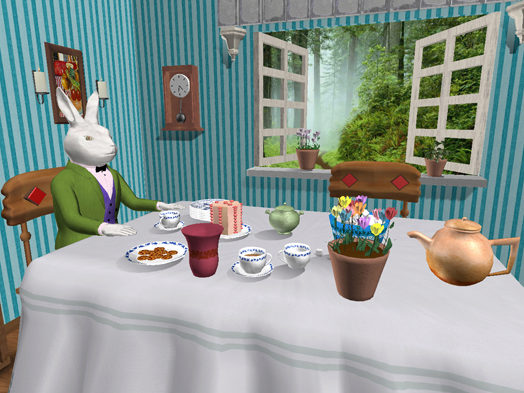Innovative virtual reality technology revolutionizes stroke therapy
March 1st, 2012
Categories: Applications, Human Factors, User Groups, Virtual Medicine, VR

About
EDITOR’S NOTE: Two Northwestern University Medill School journalism students spent a week at the UIC Electronic Visualization Laboratory (EVL) for their practicum experience, writing articles that highlight some of EVL’s accomplishments.
In the following article, they profile EVL’s Daria Tsoupikova, an associate professor in the UIC School of Art and Design. Tsoupikova, in collaboration with biomedical engineers, computer scientists, electrical engineers and occupational therapists, has been developing a virtual-reality environment to assist stroke patients with hand rehabilitation. Tsoupikova recently received a Fulbright Scholarship and spent four months at the Arts et Métiers Paris Tech in France where she worked testing software for an online home therapy system. Now home, she and her colleagues in Chicago will continue to pursue this avenue of research.
In addition to the article, the sidebar contains two excellent overviews of EVL, profiling faculty, students and staff and more of the Lab’s virtual-reality and health-related research projects.
Innovative virtual reality technology revolutionizes stroke therapy
by Rian Ervin and Thomas Owen, Medill Reports Chicago
March 01, 2012
Playing 3-D games in a fantasy virtual reality environment such as Alice in Wonderland is a new avenue for rehabilitation and it sure beats monotonous sessions of moving objects from one box to another to repair motor skills. “Virtual reality therapy is so popular right now because patients get bored,” said artist Daria Tsoupikova, an associate professor at the University of Illinois at Chicago’s School of Art and Design. With virtual reality, patients get excited. “They can see something colorful, they can see some kind of environment, other characters, and have a story behind the therapy,” she said.
Advances in stroke therapy are rapidly evolving with virtual reality techniques. Tsoupikova, along with Dr. Nikolay Stoykov, a biomedical engineer, Randy Vick, an art therapist, Yu Li, an art research assistant and a group of occupational therapists and engineers from the Hand Recovery Laboratory at the Rehabilitation Institute of Chicago, collaborated to develop a virtual reality environment to assist stroke patients with hand rehabilitation.
RIC began with a project utilizing a specially calibrated glove that patients wear in conjunction with a virtual reality environment. In this virtual world, the patient is guided through a series of therapeutic hand movements. Now, Tsoupikova is working with computer scientists at the UIC’s Electronic Visualization Laboratory and RIC physicians to further develop the glove technology.
Read the complete story